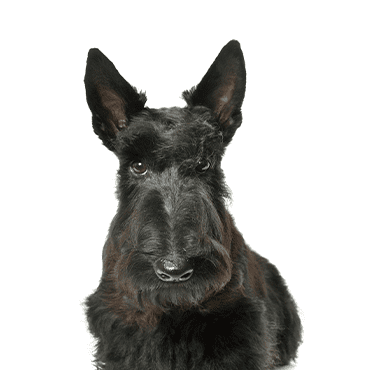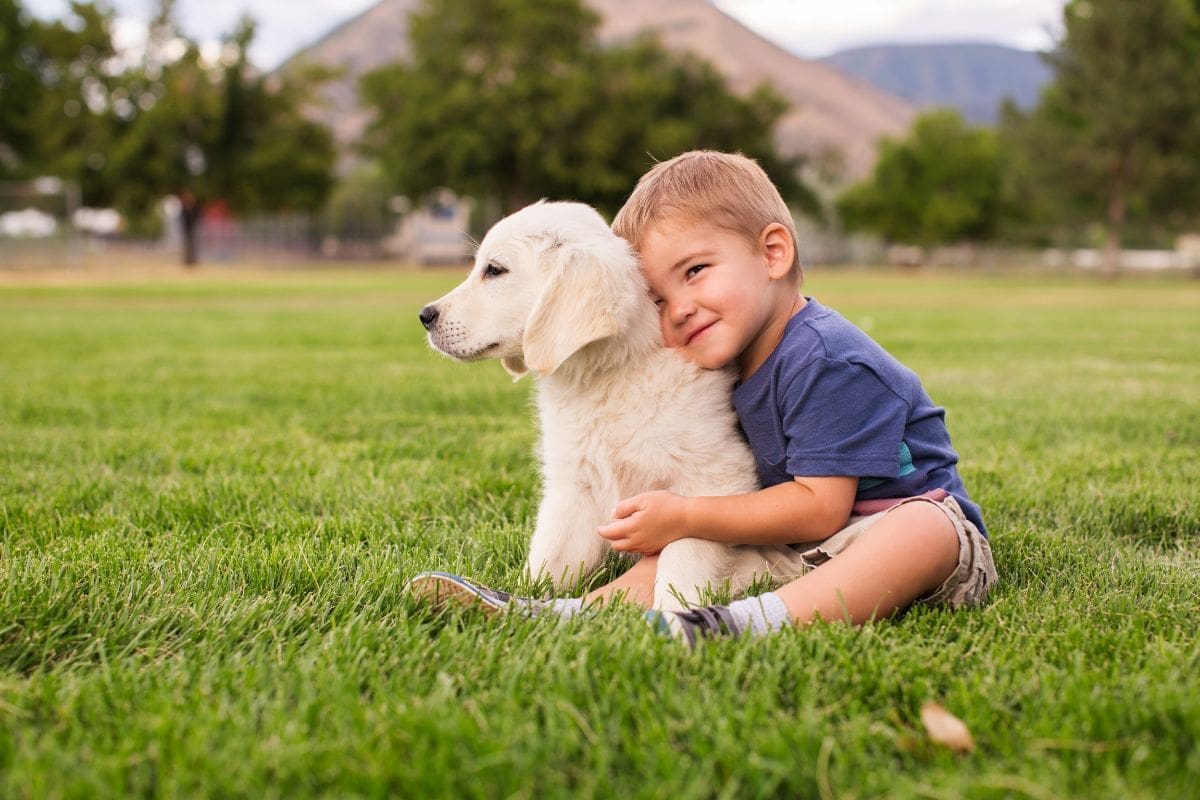Please create a free account, or login by clicking here.
Petland Oklahoma City
Petland Tulsa
 Adopted
Adopted
Status
Adopted
Reference ID
658
Birth Date
10-15-2021
Gender
Female
Color
Black
Please fill out our contact form below.
"*" indicates required fields

This breed of dog which is also known as the Aberdeen Terrier and popularly called Scottie for short was initially one of the highland breeds of terrier grouped under the name of Skye Terrier. Discover more about our Scottish Terrier puppies for sale below!
Breed History
Scottish Terrier was initially bred in a bid to hunt down and kill vermin on farms in the highlands of Scotland. Its actual origin is obscure and undocumented. It has been native to Scotland for several hundred years, there is a popular belief that the original Scottish Terrier was brought in by the Celts. It was birthed by the western part of the Scottish Highlands and the Hebrides Island. The Scottish Terrier was loved for its superb working ability and gameness.
Temperament
Scottish Terrier is known to be a dog of great independence and self-assurance; it is feistier than other terrier breeds. Its rugged nature has earned it the nickname ‘Diehard’ as it is one very alert, territorial and quick-moving dog. It is also a very playful and intelligent dog with great determination. It possesses a lot of drive and energy that needs to be channeled properly. It is brave but also loyal to its family.
Environment
The Scottish Terrier does relatively well in any environment as it is a breed that easily adapts. It doesn’t do well with hot climates; when in an environment surrounded by water, it should be properly monitored as it drowns easily as a result of its short legs hence, the need for constant supervision. Scottish Terrier requires ample space to romp around and it is recommended to keep this breed in a fenced environment to prevent unwanted chasing and biting. An apartment that is well ventilated and frequented by people is suitable for the Scottish Terrier.
Exercise
A Scottish Terrier does well with daily exercises as it makes it happier and calmer. Activities such as a game of fetch, ball game, long walks would suffice for this breed. At least one hour of exercise a day is recommended for the Scottish Terrier.
Grooming
Scottish Terrier is a breed that does not shed heavily but requires extensive grooming. Its coat needs to be combed at least three times a week in order to prevent matting. In addition, its beard requires daily cleaning and professional service should be hired from time to time. Grooming a Scottish Terrier requires a whole lot of effort as every strand of hair on its body has its own place.
Our Scottish Terrier puppies for sale come from either USDA licensed commercial breeders or hobby breeders with no more than 5 breeding mothers. USDA licensed commercial breeders account for less than 20% of all breeders in the country.
The unregulated breeders who are selling outside of the USDA regulations and without a license are what we consider to be “Puppy Mills.” We are committed to offering Scottish Terrier puppies who will grow up to become important members of your family. We only purchase puppies from the very best sources, and we stand behind every puppy we sell.
Contact us today to learn more about the availability of our Scottish Terrier puppies for sale. We look forward to helping you find your next family member. Our pet counselors can answer any questions you have about our Scottish Terrier puppies.
Ten Frequently asked Questions about the Scottish Terrier
Are all Scottish Dogs black?
Not all are black. Scottish Terrier comes in three different colors which are black, wheaten and brindle.
What kind of diet should the Scottish Terrier be fed?
For the Scottish Terrier, it is recommended to consult a dietician and veterinarian so as to have an idea of what diet to supply it with. It should, however, be fed with at least 30percent vegetable, 40poercent meat, and 30percent starch and fats.
Does the Scottish Terrier have serious health issues?
Scottish Terrier rarely develops any serious health issues; this is not to say there are no extreme cases to look out for though. Some common cases observed in this breed are cramps, liver disease, hemophilia, etc.
At what age does the Scottish Terrier’s ears stand up?
Scottish Terrier is born with floppy ears that stand on their own accord when it is around 10 weeks of age.
Should Scottish Terrier’s ears be cropped?
No. A Scottish Terrier’s ears should never be cropped; they will stand in their own time.
Is Scottish Terrier a smart dog?
Yes. What it lacks in size, it makes up for in intelligence. Being originally designed as a working dog, it has a lot of drive and intelligence. Scottish Terrier can be stubborn though.
Does the Scottish Terrier love to swim?
Most Scottish Terriers love to swim, although they are not natural swimmers. A Scottish Terrier’s short legs make it easy for it to drown and as a result should not be allowed near water unsupervised.
At what age can I take my Scottish Terrier home with me?
Puppies require a certain amount of time with their mothers during which they learn some important skills from her. STCA recommends that puppies should not be sold until they are at least 10 weeks old.
Is a fenced yard required for a Scottish Terrier?
Scottish Terrier is a breed with very strong hunting instinct and will go after anything it considers to be a prayer. It is therefore advisable to keep it within a fenced environment or on a leash.
Can the Scottish Terrier do well with children?
As long as the children are well behaved and also respect the Scottish Terrier’s independent nature, it is very easy for them to get along just fine.
If you require a dog with lots of drive and energy, the Scottish Terrier is your go-to dog.








Bringing home a new pet is an exciting milestone, but choosing where to find your furry family member can be challenging. Petland has established itself as a reliable and compas...

That adorable puppy isn’t just cute; it’s a complex creature needing specific things — understanding what makes a puppy thrive is key to their happiness and de...

So, you’re thinking about getting a puppy from Petland? Get ready because you’re not just taking home a bundle of furry joy. You’re also getting a full-on star...

Bringing home a new puppy is like adding a little tornado of energy to your life. They zoom around, chew on everything, and look at you with those big, eager eyes that say, R...

Bringing a dog into your family is a big decision that comes with lots of joy, responsibility, and, of course, plenty of tail wags. With so many breeds to choose from, finding t...
Image Not Found
So, you’ve decided to add a four-legged best friend to your life—congrats! But now comes the hard part… which breed is right for you? Choosing a dog isn’...

Bringing home a new puppy? Get ready for cuteness overload, lots of tail wags, and… a bit of chaos too. Puppies are like tiny, adorable tornadoes that can turn your world ...

Self-care is all about wagging your tail and feeling pawsitively great! It involves activities that keep you happy, healthy, and full of energy. Whether it’s a daily walk,...

Bringing a puppy into your life is like welcoming a furry little tornado of joy, energy, and endless cuteness. But let’s be real—along with the cuddles and wagging t...

As a cat owner, ensuring the health and safety of your furry friend is a top priority. With the emergence of avian influenza, commonly known as bird flu, it’s crucial to u...

Ah, Christmas! The time of year when homes are aglow with twinkling lights, the air is filled with the scent of pine, and everyone is wrapped in a warm, fuzzy feeling of joy and...

There’s nothing like the joy of bringing a fluffy, four-legged bundle of joy into your life. Puppies are the ultimate companions—full of love, energy, and just a lit...
"*" indicates required fields